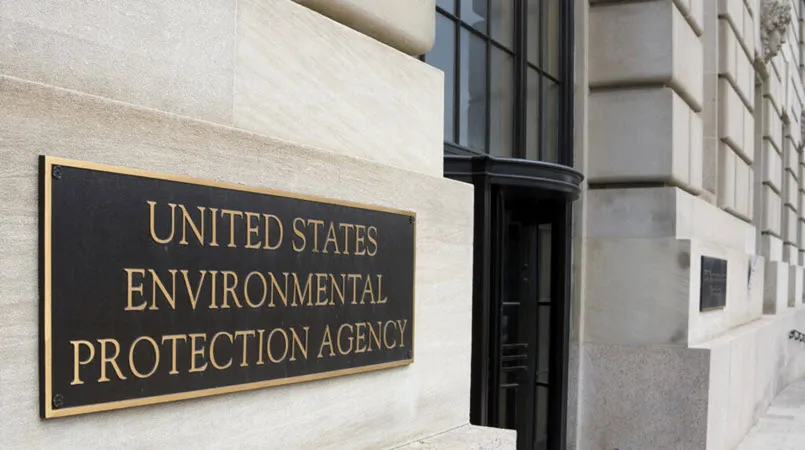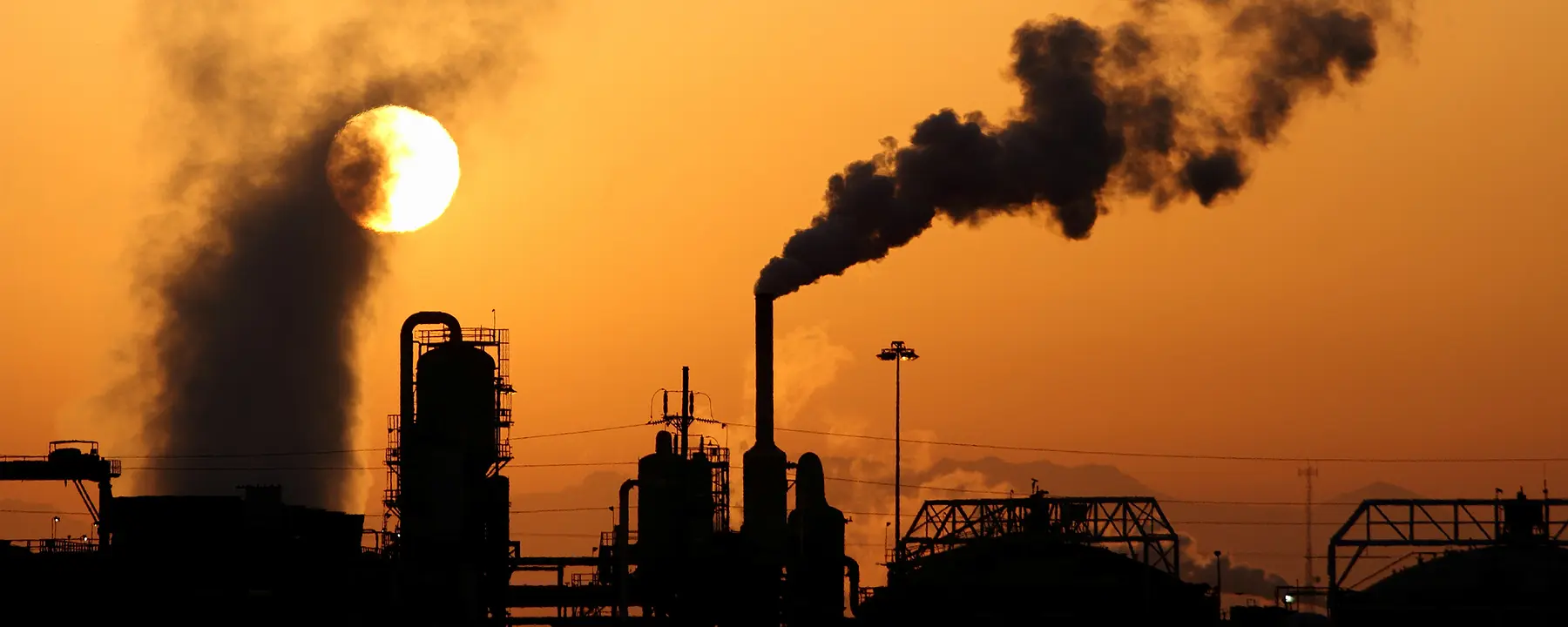
As carbon dioxide removal (CDR) and carbon capture and storage (CCS) technologies continue to advance, the need for regulations ensuring safety is becoming more critical.
These emerging technologies, essential to achieving global climate goals, have various safety concerns that policymakers must address to protect both the environment and communities.
In the US, several policies are being developed to support the safe and responsible implementation of both CCS and CDR.
Direct air capture (DAC), a specific CDR approach, is especially gaining attention due to its potential in removing accumulated CO2 from the atmosphere.
Despite their differences, DAC and CCS share some infrastructure and regulatory concerns. Lawmakers are now tasked with finding the best ways to regulate these technologies and ensure they don’t negatively impact public health or the environment.
“The safe deployment of carbon capture technologies is crucial if we are to meet our climate goals,” said Danielle Riedl, a climate policy expert. “We need robust regulations that address the unique challenges posed by both DAC and CCS technologies.”
>> RELATED: EPA Releases 2023 Data Collected Under Greenhouse Gas Reporting Program

How Do DAC and CCS Help Meet Climate Goals?
The Intergovernmental Panel on Climate Change (IPCC) recognizes the vital, though limited, role DAC and CCS will play in reducing carbon emissions. CCS focuses on preventing CO2 from entering the atmosphere, while DAC removes CO2 that has already accumulated.
In the coming decades, both technologies are expected to complement one another, especially in addressing residual emissions.
CCS technologies capture CO2 at the emission source, like power plants, while DAC facilities pull it directly from the ambient air. Both approaches require stringent safety regulations, as their large-scale implementation could present unforeseen risks.
“Regulating these technologies ensures that we not only reduce emissions but also protect the health of surrounding communities,” noted Willy Carlsen, who has been working on climate policy for over a decade.
Current US Regulations for Carbon Capture and Removal
The Environmental Protection Agency (EPA) currently oversees several aspects of carbon capture and sequestration. Under the Clean Air Act, the EPA sets national standards for air quality and emission reductions. This ensures that new CCS projects meet the highest environmental standards, reducing the risk of hazardous pollutants being released into the air.
However, as these technologies evolve, further regulations are needed to keep pace with the industry's development. Several states, like Illinois, have passed their own laws to strengthen CCS and DAC safety protocols.

>> In Other News: Growing Our Commitment to Carbon Removal with the U.S. Department of Energy
CO2 Transportation and Its Risks
After capture, CO2 must be transported to sequestration sites. Pipelines are the most cost-effective option for long-distance transportation, but they present their own risks.
Federal and state agencies regulate the construction, operation, and maintenance of these pipelines. The Pipeline and Hazardous Materials Safety Administration (PHMSA) ensures pipeline safety through inspections and safety standards.
However, incidents such as the 2020 pipeline rupture in Satartia, Mississippi, which sent over 40 people to the hospital, have highlighted gaps in the current safety regulations.
PHMSA Deputy Administrator Tristan Brown has since testified that improving safety standards for CO2 pipelines is a top priority for the agency.
How Can Policymakers Improve Safety?
There are several ways policymakers can enhance the safety of carbon capture and sequestration projects:
Incentivizing renewable energy: Policymakers should consider incentives for using renewable energy to power DAC and CCS projects. This would help maximize the climate benefits of these technologies and minimize any negative health impacts from fossil fuel use.
Further research and monitoring: More research is needed to understand the potential impacts of co-pollutants emitted by CCS facilities. Regular monitoring should be required to ensure harmful pollutants do not exceed safety thresholds.
Addressing transportation risks: Expanding the pipeline network to accommodate large-scale CCS projects presents additional risks. Centralized siting authority could help streamline pipeline permitting and ensure safety across state lines.
Enhancing transparency: Regulatory transparency is essential for building public trust in these technologies. Providing communities with access to real-time data on emissions and safety monitoring can improve accountability.
Addressing long-term liabilities: As these projects aim to sequester CO2 for thousands of years, long-term liability is a significant concern. Establishing clear financial mechanisms and determining who is responsible for potential damages will be essential.
Future Outlook for Carbon Capture and Removal
The successful deployment of CCS and DAC depends on continued policy action at both the federal and state levels.
As these technologies are further developed and deployed, they will play an increasingly important role in reducing carbon emissions and achieving net-negative emissions targets.
However, public safety must remain the top priority. With the right regulatory frameworks in place, the US can lead the way in deploying these technologies responsibly and effectively.
"Policymakers must focus on transparency, research, and safety," said Hannah Harasaki, a leading expert on US climate policy. "By doing so, we can ensure that these technologies work for both the climate and the communities they serve."
Subscribe to the newsletter
Daily decarbonization data and news delivered to your inbox
Follow the money flow of climate, technology, and energy investments to uncover new opportunities and jobs.
Latest issues
-
Inside XCF Global's $300M Bet to Double U.S. SAF Output
Inside This Issue ✈️ Inside XCF Global's $300M Bet to Double U.S. SAF Output ⚙️ Capsol Technologies Signs MoU with US Utility to Deploy CapsolGT® for Low-carbon Gas Power Generation 🏭 Babcock &...
-
64 Carbon Projects Were Stuck. Texas Just Unlocked Them
Inside This Issue 🛢️ 64 Carbon Projects Were Stuck. Texas Just Unlocked Them ⚙️ In Ohio, Hydrogen Industry Presses on Despite Federal Uncertainty 🧲 Agami Zero Breaks Through With Magnetic Hydrogen...
-
This U.S. Plant Might Change Aviation Forever
In This Issue 🛫 A Georgia Plant Just Cracked Aviation's Fuel Puzzle 📉 CO2RE And ERM Release 2025 Update On Greenhouse Gas Removal Costs 🔗 Abatable Partners With BlueLayer To Streamline Corporate C...
Company Announcements
-
Eden Prairie, MN – Carba, a leading biocarbon technology and carbon removal company, today announced the close of a $6 million investment round led by Rusheen Capital Management and Canopy Generati...
-
COLUSA COUNTY, Calif., Dec. 4, 2025 /PRNewswire/ -- CarbonZero.Eco, a Silicon Valley–based, venture-backed climate technology startup pioneering regenerative agriculture and carbon removal through ...
-
NORTH VANCOUVER, BC, Dec. 7, 2025 /PRNewswire/ - Hydron Energy, a leading innovator in clean fuel and gas separation technologies, today announced the successful demonstration of carbon-negative Xe...
-
Facility will utilize Babcock & Wilcox’s SolveBright™ solvent-flexible CO2-capture process Full notice to proceed anticipated in March 2026 Baseload power demand is driving the need for ...